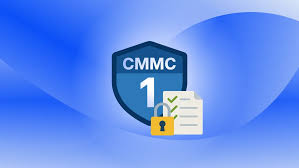Teams preparing for a C3PAO review often find themselves caught between technical readiness and compliance deadlines. A thorough risk assessment can bridge that gap by providing an honest view of where security controls stand. Before jumping into a third-party evaluation, taking the time to uncover weaknesses makes the entire process less stressful and far more predictable.
Elevating Audit Readiness with Early Risk Discovery
Early risk discovery acts as a foundation for true audit readiness. By identifying control weaknesses before a C3PAO review, organizations can take meaningful steps to align with CMMC compliance requirements. This proactive approach prevents last-minute scrambles and ensures that corrective actions are based on verified data rather than assumptions.
Teams working under CMMC level 1 requirements often underestimate the value of structured risk assessments. Even basic security measures need validation to confirm that they meet the standard set by assessors. For those pursuing CMMC level 2 requirements, the early detection of overlooked vulnerabilities offers an opportunity to design stronger safeguards that stand up to third-party scrutiny.
Can Risk Assessments Uncover Hidden Gaps Ahead of a C3PAO Audit
Risk assessments provide clarity that internal reviews may overlook. System misconfigurations, outdated policies, or incomplete logs can remain hidden until formal testing begins. By running structured assessments prior to the C3PAO engagement, organizations reveal those blind spots and create room for remediation before the assessor arrives.
Hidden compliance gaps are especially impactful under CMMC level 2 compliance, where requirements extend beyond basic hygiene into documented, repeatable practices. Risk assessments help teams measure whether controls are operating effectively and if any supporting evidence is missing. This type of preparation reduces the chance of unpleasant findings during the actual review.
Framing Internal Benchmarks Before Third-party Evaluation
Without benchmarks, it becomes difficult to measure whether progress toward compliance is moving in the right direction. Risk assessments offer that internal yardstick, allowing leaders to compare their current state with CMMC compliance requirements. This creates a baseline to measure improvement and prepare teams for external evaluation.
For companies working with a CMMC RPO, internal benchmarks guide the remediation process. They help align consulting recommendations with the organization’s specific needs rather than generic standards. Establishing these internal metrics ensures that by the time a C3PAO review takes place, teams can demonstrate maturity through measurable progress.
Do Risk Assessments Reduce Costly Surprises During the Formal Review
Unexpected findings during a C3PAO review often come with heavy costs, both in time and resources. Risk assessments reduce these surprises by simulating what a third-party assessor might uncover. By addressing issues ahead of time, organizations lower the risk of delays or repeat reviews.
The financial impact of unpreparedness can extend beyond the review itself. Incomplete alignment with CMMC level 2 requirements may cause project delays, missed contract opportunities, or even disqualification from certain bids. Risk assessments work as a preventive tool that keeps the organization’s path toward certification efficient and controlled.
Strengthening Control Evidence Through Proactive Threat Analysis
Evidence collection is one of the most time-consuming parts of compliance. A risk assessment adds value by highlighting where evidence is strong and where it falls short. This makes control documentation easier to refine and ensures the material presented during the C3PAO review meets the standard.
Proactive threat analysis within a risk assessment also strengthens the case for control effectiveness. For instance, simulated attack scenarios can validate whether current defenses respond appropriately. This type of evidence supports not only compliance with CMMC level 2 compliance but also demonstrates the organization’s commitment to ongoing security maturity.
Will Early Risk Testing Shorten the C3PAO Review Timeline
An extended review process often results from missing documentation or unclear responses to assessor questions. Early risk testing directly addresses this problem by ensuring systems and controls have been tested in advance. This preparation allows the C3PAO to focus on confirming findings rather than uncovering them for the first time.
For teams balancing deadlines, shortened timelines mean reduced disruption to operations. Meeting CMMC compliance requirements faster also accelerates eligibility for contracts requiring either CMMC level 1 requirements or higher levels. In industries where contract timing determines revenue flow, this efficiency can make a significant difference.
Validating System Resilience Prior to Assessor Arrival
System resilience often defines how well an organization can maintain security under pressure. Risk assessments provide a realistic test of that resilience by simulating stress scenarios. Prior to assessor arrival, this validation gives leadership confidence that systems can withstand scrutiny while still maintaining operations.
For companies addressing CMMC level 2 requirements, system resilience carries added weight. Resilience isn’t only about technical performance; it extends to incident response documentation and recovery strategies. By validating these elements early, organizations show that they have both preventive and corrective measures firmly in place.
How Vulnerability Findings Guide Remediation Before C3PAO Engagement
Vulnerability findings serve as a map for remediation efforts. Rather than guessing which areas demand attention, teams can prioritize based on verified weaknesses. This prevents wasted resources and ensures that efforts directly support alignment with CMMC compliance requirements.
In partnership with a CMMC RPO, vulnerability data guides structured remediation plans. These plans often involve technical fixes, updated procedures, and strengthened documentation. By addressing vulnerabilities ahead of the C3PAO engagement, organizations step into the review with confidence, knowing that the most significant risks have already been reduced.


